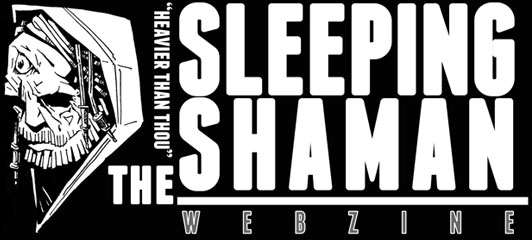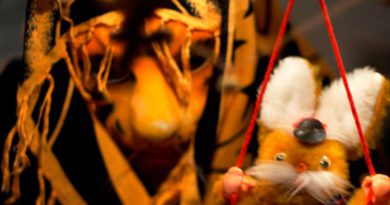Estrangement: Dave Bowes Interviews JS & Ligamincer From The Funeral Doomers
It’s guaranteed that every year there will be plenty of releases that catch the ear, hit that riff-centric sweet spot and generally rock your world for an hour or so, but the albums that truly transport you to somewhere you’ve never ventured, or even dared imagine, are generally few and far between.
The debut record from Australian avant-doom collective Estrangement fits both bills, providing a doom listening experience that harks back to its glorious forefathers while exploring strange, sometimes otherworldly sonic territories. Given how long this album has been in the works and the impact that it has made now it’s finally here, we felt it only fitting to journey into the minds of its creators and find out how Disfigurementalitycame to be.
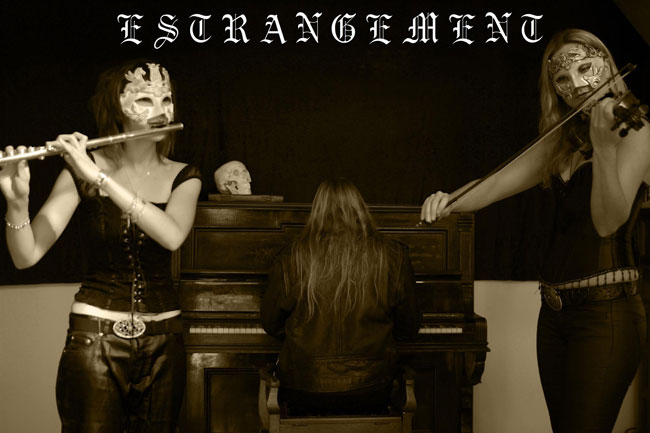
Hi, I just wanted to say thank you for giving me your time here. Disfigurementality is one of the most intriguing records I’ve heard all year, so it really is a pleasure to get this opportunity. Can you perhaps sum up the story of Estrangement so far and what your aims were when you first envisioned the band? Have these aims changed much over the past decade?
JS: G’day Dave, and thanks for your genuine interest in our music. Estrangement started as a solo project (but not necessarily by choice) many moons ago. The vision at the time was to expand (or corrupt, depending on your perspective) funeral doom metal from down-tempo minimalism into something more diverse by introducing elements atypical to the genre such as classical music and wild tempo changes. Since ‘the beginning’, Czar, Euterpe and Ligamincer have joined on violin, flute and double bass respectively. The theory has remained the same throughout, but the praxis has expanded considerably since the band’s inception.
Ligamincer: JS asked me to play double bass on some recordings he had made, the recordings were terrifying. We prepared for each recording with various beers, wines, spirits, found educational material like a Mayhem documentary, and then around 2am in the morning we created music. It was usually the next day or the next week in which we listened back to what we recorded to work out what we actually did during these sessions.
I’m obsessed with contrast and change; tension and release…
Your approach to songwriting on this album is incredibly unique and it almost feels like there’s a dream-logic to how it flows. Given that I’m probably talking nonsense, how did you go about constructing these songs? Did you set any limits or constraints on yourself prior to starting writing?
JS: An enlightened observation – thank you! As a musician (and perhaps, simply as a human being), I’m obsessed with contrast and change; tension and release, and I would like to think all people are to varying degrees. I love music that ebbs and flows, assumes control, and takes the listener on a journey. When constructing songs for Estrangement, I sometimes conjure specific visualisations for inspiration.
For example, I might think of the music like tides of the ocean, where moments of rage recede into dead calm, or the moment before a person convulses into a fit. Each song, then, follows its own unique course and is delivered into an environment it must respond to. I believe many music creators overlook the power of structure when they remain obedient to traditional song formulas such as verse, chorus, bridge, etc.
I don’t consciously set limits on the songs other than time (but of course all beings have our own limitations). The longer a song exists in time, the more opportunity there is for contrast in feel; correspondingly, the shorter the song, the more condensed and singular the feel. When deciding on the length of a piece of music, the chosen duration of time directs the opportunity for expression, and this is partially why the pieces on Disfigurementality vary in length in the way that they do.
Ligamincer: Life is a constraint; when you wake up in the morning there’s always something to stop you or limit you – you need to dominate that, then you can dominate everything else. The making of this is more about domination than subservience, we set out to make a record and we made a record. It could be the best thing ever made or the worst; what matters is we did it.
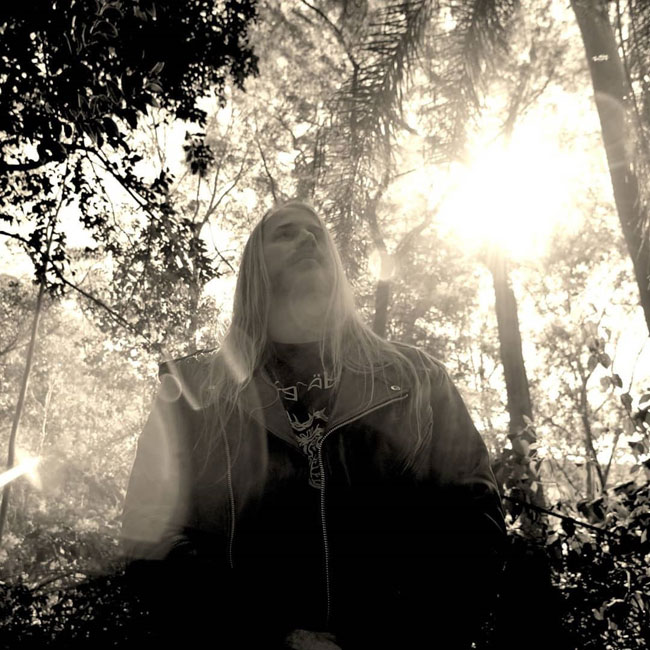
There are some elements and styles of music (e.g., throat singing, liturgical chant, Middle Ages composition) here that are very rarely found in doom, or in heavy music as a whole. Were these forms that you had any experience in working with prior to recording the album? How much research on the forms was necessary?
JS: I don’t necessarily appreciate the essence of music through the lens of genre, but mood. A hopelessly faithful disciple of the power of music, no matter what the genre is, if the mood connects with me, I’ll appreciate it. I’ve spent my life collecting smaller or larger musical skills from various canons that, to my ears, contain a particular power, and they’ve all found their place in Estrangement because one of the core tenets of this band is to explore contrasting textures of mood.
I’ve calmed a little now, but around the time the demo tape was recorded ten years ago, I became interested in forms of older music which reinvigorated my love of music theory, opening new possibilities. I never wait to perfect a new discovery before I utilise it either; once I have the gist of something, I’ll start applying it in a creative context and just see where it takes me – if it happens to sound raw and unsophisticated, perfect.
Ligamincer: The skeleton of this music is doom, we added to this skeleton to make a creature. When you think of the anatomy of anything, either a skunk, a flower or a polar bear, they are all made of many things to make the whole. Sometimes those individual things are disgusting or beautiful, but a skunk is not a skunk without its lungs, a flower is not a flower without dirt, and a polar bear isn’t a polar bear without its fur. We started with a skeleton, and we created a creature.
We started with a skeleton, and we created a creature…
The breadth of instrumentation that you all handle is incredibly impressive. Are you self-taught or do you have some formal training?
JS: Guitar is my primary instrument, and I did have a couple of years of tuition as a teenager through a family friend. I was fortunate enough to have a teacher that understood the spirit of music, and this had a profound impact on my juvenile mind at the time, eventually granting me the courage to attempt any sound that interested me. I briefly undertook cello lessons as an ‘adult student’ which was a surreal and at times humiliating experience. I am self-taught on the other instruments I play though, including drums, piano and voice.
Ligamincer: Who would teach someone to make this? There’s no school for this music. If we made this music at a school, they would send us a ‘cease and desist’ order.
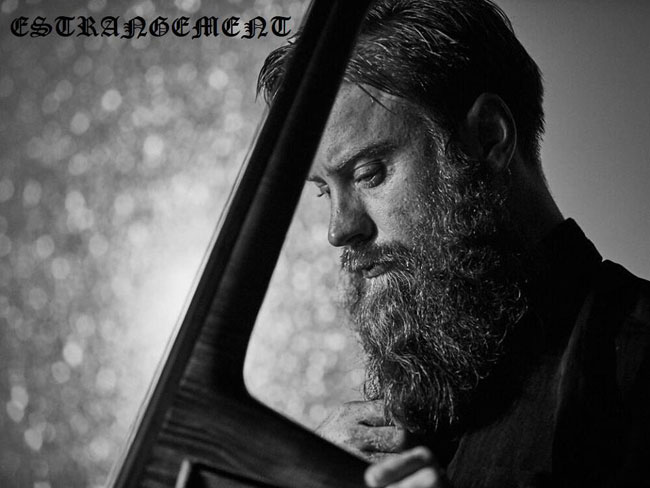
(To JS) On a similar note, Estrangement started out largely as a solo work but has now grown to a full line-up. Why did you decide to bring in new blood and how did each of you come to be involved?
JS: Estrangement started a solo project by necessity, not design. At the time, I had just moved cities to ‘start again’ and it was never my intention to remain a one-man-band permanently. Once the demo tape was released, I had something tangible to show other musicians and Czar (violin), an old friend, and Euterpe (flute), a new acquaintance, expressed interest and joined Estrangement in time for the split CD with Begrabnis in 2013 (released through Weird Truth Productions).
I met Ligamincer some years later and was literally in awe at the range of sounds he could achieve through the double bass, which was an instrument I had limited exposure to previously. Notoriously a man of few words, I suggested he come on board with the band and his response was: ‘Great’. The rest is history.
There’s a sense of old-world poetry to your lyrics and language, especially when it comes to pieces like Doppelganger. Is poetry an influence on your writing and do you see yourself as part of any poetic traditions?
JS: I am fascinated with language and come from a family where riddle, wordplay and witticism form expressions of affection and selfhood. In the same way that notes form the foundation of music, words form the foundation of meaning, and when I write lyrics, I revel in the freedom of saying literally fucking anything. I am undoubtedly influenced by the words of other writers, but, perhaps out of ignorance, I honestly couldn’t concretely anchor myself to any specific tradition. When considering the vocal performance of a song, I will break the lyrics down into a series of different voices that I believe will best convey the meaning of the words and mood of the music.
I revel in the freedom of saying literally fucking anything…
The centaur on your cover, as well as many of the themes on the record, seem to show an affinity for mythology and folklore with your music. Are there any particular myths or belief systems that influenced these songs, and do these play any part in your life outside of the band?
JS: The magnificent art for the album was done by Anton Pulvirenti, who is internationally renowned for creating other worlds through his amazing works. The Centaur was actually his idea after we discussed images of ancient, primal power and how such images could be depicted as vulnerable or defeated.
Ligamincer: Belief systems are created to control and manipulate; this music was created through domination and persistence. We would prefer our music to offend others than support them. There isn’t enough backbone in offensive art these days, when anyone is offended, everyone crawls back into their hole. We are proud to offend, and we want to double down on the offensive.
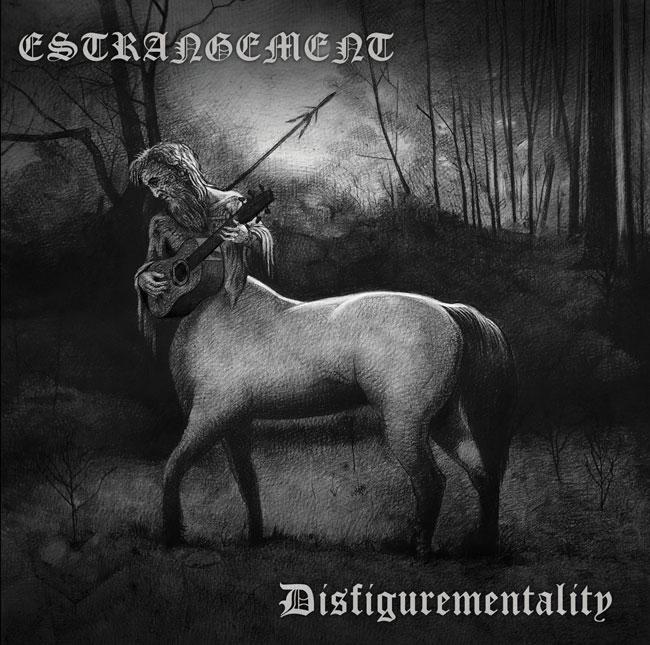
The first reviews have been coming in for the album now. How do you feel the reception has been so far?
JS: Reviews have been unrelenting in their flattery so far and it’s both a surprise and a relief that people understand and value this music in the way that they do. Estrangement has generally received positive feedback in the past, but the early responses to Disfigurementality are on a new level with reviewers unleashing superlatives like ‘virtuosity’, ‘mind-blowing’, ‘transfixing’ and even ‘a schizophrenic’s dream’ when describing our compositions. I feel our music demands effort on behalf of the listener to appreciate so it’s great to hear this effort is enjoyable for those that have taken an interest in the band.
Ligamincer: People hear what they want to hear, and people say what they want to say. I’m not going to tell anyone what to say, I am not their mouth or their brain. I would be impressed if they shouted their reviews at strangers in the park until their vocal cords fell apart, that would be very impressive.
My first experience with Aesthetic Death was via the early Esoteric releases…
I’ve been a fan of Stu and Aesthetic Death for as long as I can remember so it feels like a very fitting home for you. How did you first get in touch and what was your first experience with the label as a listener?
JS: My first experience with Aesthetic Death was via the early Esoteric releases which I vividly remember listening to for the first time as a teenager after overhearing someone refer to them as the heaviest band ever. Fast forward in time fifteen years, shortly after the Australian label Aurora Australis released our demo tape, and I had a small list of larger labels to approach, including Aesthetic Death, as a next step.
As it turned out, we were looking for another band to do a split with at the time and the utterly unique band Begrabnis, who were already affiliated with the mighty Weird Truth Productions, turned out to be the right match. Stu (from Aesthetic Death) and I decided we would therefore collaborate on a subsequent release and that intention has been realised with Disfigurementality.

Have any of these songs been played live, or are there any plans to do so?
JS: Ligamincer and I regularly recite passages of music for small clusters of friends and family but aside from these performances Estrangement is yet to officially play live. We would love to play live more formally one day but that will involve either expanding the line-up or reshaping the music for performance with the existing line-up; both options are worth considering closely.
Ligamincer: This music is alive, and it was created live. People should listen to what we have created and listen to anything more we create if they want to, whether it’s recorded or in performance. An artist creates and doesn’t get told what to do; if we perform, we perform; if we record, we record.
This music is alive, and it was created live…
Your last recording prior to this record was a cover of My Dying Bride’s De Sade Soliloquy for the Lake Of Ghosts compilation in 2017. How much influence has My Dying Bride had on you as musician and songwriter and why did you choose this song?
JS: I was a fan of My Dying Bride in the 90s but haven’t listened to the band closely since that time. We chose De Sade Soliloquy because it’s one of My Dying Bride’s most trance-like and forgotten songs from my favourite era of theirs. Mike from doom-metal.com, an extraordinary fellow, approached us directly with an invitation to contribute and we gladly agreed to take on the challenge. I also contributed to the Via Dolorosa track on that compilation and felt privileged to collaborate with the likes of Dominik Sonders (Sidetrack Walker) and SVC (Until Death Overtakes Me) in the process.
I’ll leave things here but thank you for giving me your time and music. If there’s anything you’d like to add, please feel free…
JS: Thank you for a wonderful interview and for your appreciation of what we do.
Ligamincer: Anyone should feel free to contact us directly. We would be happy to come and have a cup of tea with you.
Label: Aesthetic Death
Band Links: Facebook | Bandcamp | Instagram
Interviewed by: Dave Bowes
